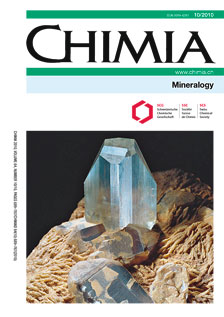Advances and Gaps in the Knowledge of Thermodynamics and Crystallography of Acid Mine Drainage Sulfate Minerals
DOI:
https://doi.org/10.2533/chimia.2010.699Keywords:
Acid mine drainageAbstract
Acidic and metal-rich waters produced by sulfide decomposition at mining sites are termed acid mine drainage (AMD). They precipitate a number of minerals, very often sulfates. The recent advances in thermodynamic properties and crystallography of these sulfates are reviewed here. There is a reasonable amount of data for the divalent (Mg, Ni, Co, Fe2+, Cu, Zn) sulfates and these data may be combined with and optimized by temperature-relative humidity brackets available in the literature. For the sulfates with Fe3+, most data exist for jarosite; for other minerals and phases in this system, a few calorimetric studies were reported. No data whatsoever are available for the Fe2+-Fe3+ sulfates. A significant advance is the development of the Pitzer model for Fe3+-sulfate solutions and its confrontation with the available thermodynamic and solubility data. In summary, our knowledge about the thermodynamic properties of the AMD sulfates is unsatisfactory and fragmented.Downloads
Published
2010-10-29
Issue
Section
Scientific Articles
License
Copyright (c) 2010 Swiss Chemical Society

This work is licensed under a Creative Commons Attribution-NonCommercial 4.0 International License.
How to Cite
[1]
Chimia 2010, 64, 699, DOI: 10.2533/chimia.2010.699.







